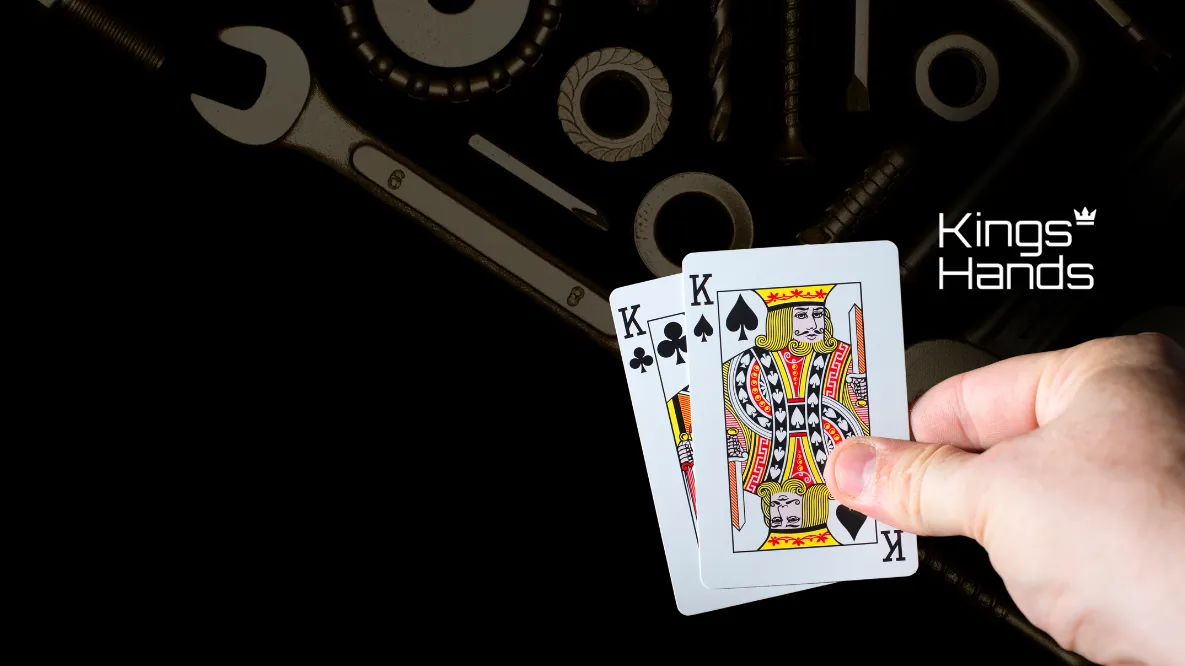Variance is hard-wired into poker, and variance means short-term variability in outcomes, which in poker jargon means bankroll swings. Or in certain more volatile scenarios these might be referred to as swongs.
The best players in the world are still subject to variance, and if someone plays poker without having a proper bankroll for doing so, they will inevitably not just lose money but very often lose their entire bankroll. This is almost regardless of the stake level, or the standard of their play.
Even the most gifted player is likely to go broke if playing MTTs with 50 buy-ins, for example, or cash games with 5 buy-ins. It is just too little to withstand the average amount of variance you would expect to encounter in these formats.
This article sets out with a simple goal, which is to offer you guidance on how to create a safe, solid bankroll management plan for yourself, to make sure that you don’t fall foul of variance and end up going busto. The good news is that this is entirely doable, if you simply follow a few key steps.
Step 1: Choose a stake which you have good reason to think you can hold your own at, or even beat. If you don’t have such a stake in mind, choose the lowest stake available, or one you can afford to lose 100x buy-ins in!
Step 2: Choose a game format which you think you are passionate enough about to get deeply into studying for a long period of time, and which you have time to play regularly (if you only have 2hrs per day free to play, don’t study MTTs). You may want to read our guide to game formats in making this choice.
Step 3: Figure out what bankroll is needed for this game format and stake. We offer some guidance on this below.
Step 4: Decide what your move up / down requirements are. This is your plan for what size bankroll you will require to build up to as a minimum before moving up in stakes, and also at what stage you will move down in stakes if you go on a downswing and lose bankroll.
This is absolutely critical to a bankroll plan, and without it you have no real protection against going bust on a bad run. We’ll go into more detail about it in our example bankroll plans at the end of this article.
Step 5: Decide what range of buy-ins you will include in your plan. This mostly goes for MTTs and SNGs, as with cash games you are likely to stick to one stake at a time for the most part.
It is worth noting that the wider you range across buy-ins in your game plan, the greater variance you will encounter (since you can run great at your higher stakes and terrible at your low stakes, or vice versa).
Step 6: Stick to your bankroll plan! If you take shots, make sure these are already measured and planned for, and that they do not inflate your average buy-in too much. If you play satellites, bear in mind that you need a much bigger bankroll to play the equivalent stake of satellite, since you must generally always play through the event itself once you bink a ticket, which drastically raises your average buy-in.
Typical Bankroll Sizes for Different Formats
Here’s a snap guide to how big a bankroll you likely need for different formats. These are just rough guides of course.
Starting with the lowest variance option, if you want to play cash games you can get away with a fairly modest bankroll in terms of buy-ins. The bigger your skill edge (win rate), the less hard variance will hit you.
Provided of course that you think you can hold your own in a given stake, you can likely get away with as little as 20 buy-ins if you are playing one table at a time. If you’re multi-tabling, say 4 tables of zoom or 8-10 of regular speed, you’ll likely want to work with a minimum of 50 buy-ins to be safe in terms of avoiding risk of ruin.
On the other extreme lie high variance formats such as MTTs and spins. If you are playing low stakes MTTs (less variance) with small fields of say under 1,000 runners on average, you can probably get away with around 100-150 buy-ins versus your average buy-in. So this means if your average stake is $10, you should be looking to work with a bankroll of around $1,000 to $1,500 to be safe from bustoville.
However if you’re talking about higher stakes MTTs where the edges are thinner and the swings swongier, you’ll likely want at least 3-400 buy-ins in your roll, especially if you’re seriously multi-tabling. Those buy-ins can vanish fast in the MTT grind! They can also come in very fast when you bink a big one.
Other formats such as SNGs lie somewhere in the middle, just as with the lowest stakes MTTs you’re probably fine with a bankroll of 100+ buy-ins for 9-45 man SNGs, possibly even less. You can also mix buy-in levels, provided you keep track of how the average buy-in is working out overall.
How conservative or liberal a bankroll strategy you choose will also impact how quickly you should move up, or especially how quickly you should move down on a downswing.
Moving Up / Down Requirements
There’s no fixed requirement to move up as soon as your bankroll is in good shape for it, naturally you also want to be sure your game is in decent shape for the next level too, and sometimes there’s no surefire way to know that other than to suck it and see.
Moving down is another matter though. Tough as it may be to implement, it is crucial that if your bankroll shrinks, you shrink your average tourney buy-in or cash table stake along with it. You should stick religiously to this. If you do so, you won’t need to pray to avoid busting, it’ll be built into the program. If you can really master moving up and down to manage your bankroll, you will quite simply never go bust. Many players have had to learn this the hard way, and we’re hoping to save you the trouble by getting you set up right from day one!
Roughly speaking, a move down requirement should be designed to ensure that you always have approximately the same number of buy-ins for a given stake. So if you’re playing $0.50 / $1 cash games (otherwise known as 100nl) with 40 buy-ins and you lose $2,000, that’s half your roll, you should probably already have moved down, but you absolutely must move down at this point to 50nl where you will once again have 40 buy-ins.
I’d recommend moving down a little sooner, perhaps once you hit 25 buy-ins at 100nl. This will ensure that you have a healthy 50 buy-in roll at the lower stake of 50nl.
Conversely, once you’ve built your bankroll up to something like $8,000 (80 buy-ins at 100nl) it might be worth looking at taking a shot at moving up to 200nl. You could set a limit for this experimental move-up by choosing to fire a maximum of 10 buy-ins at the new stake, and if it doesn’t take within that shot, move down to 100nl again but still with 60 buy-ins to play with.
There’s a psychological aspect to bankroll plans too, since moving up and down in stakes very frequently can take its toll on the psyche and be quite stressful and uncertain, so some players are certainly better off using a conservative bankroll management plan which doesn’t involve so much of this.
Final Note
Finally, one key piece of advice. Don’t just think about your bankroll plan. Write it out in all its detail, stick it on the wall by your computer, and for the love of poker, stick to it! If you don’t have a bankroll plan, sit down and do this today. You won’t regret it.
If you’d like to know more about how to crush poker, or just get all the latest best deals, head over to our PokerDeals Discord now!





















